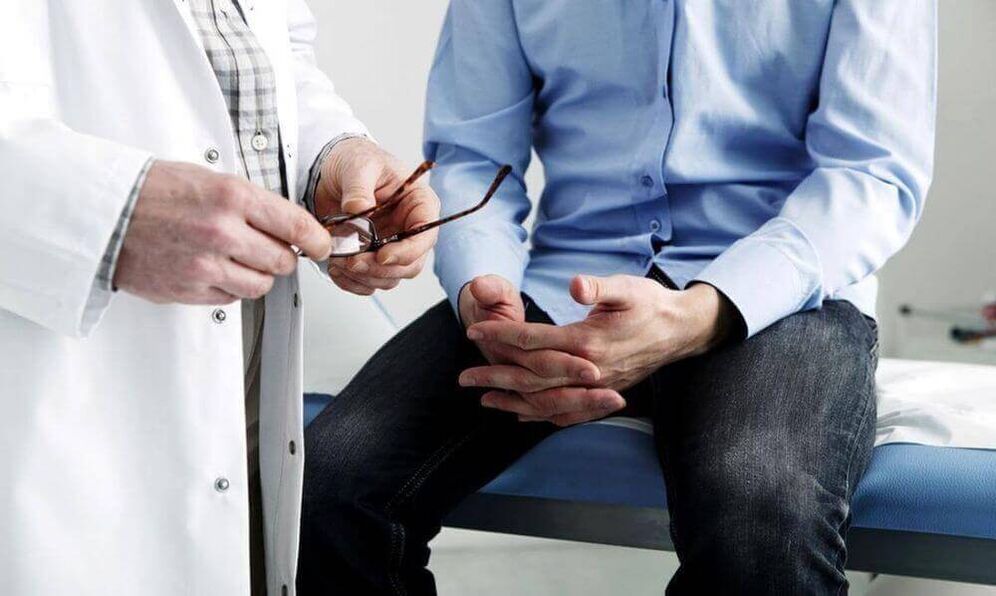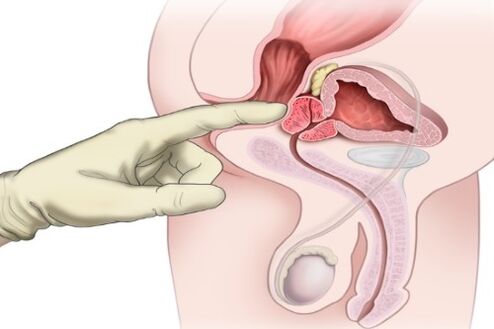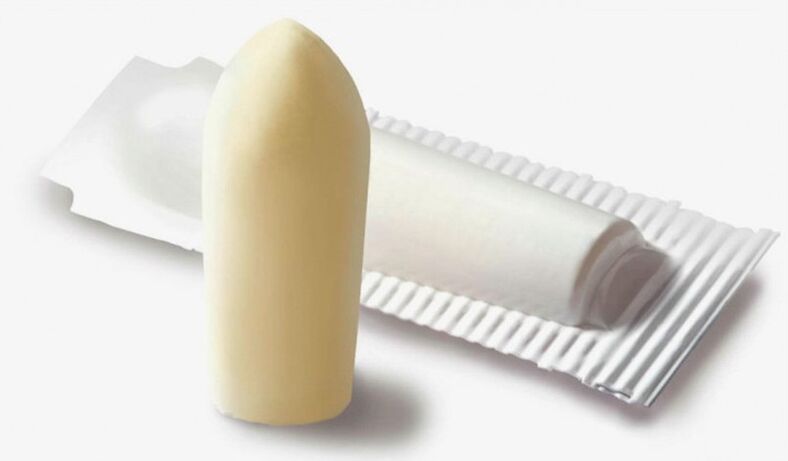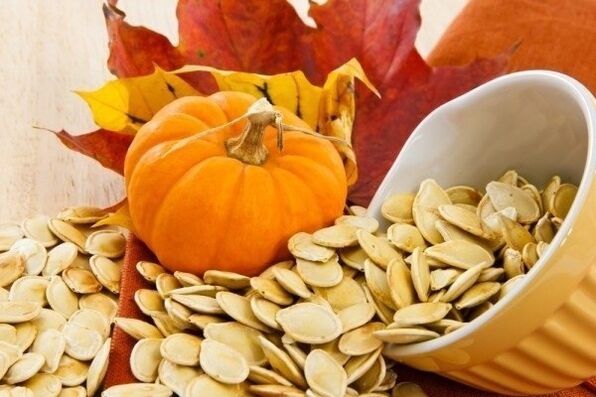Prostatitis is characterized as an inflammation of the tissue in the prostate that results from the formation of congestion in it.
In the modern world, it is the most common urological disease among all ages. According to statistics, after the age of 30, prostatitis covers 30%, 40-40%, 50-50% and more of the male population in ascending order.
However, given the specifics of the diagnosis and the possibility of the disease occurring in a latent form, the real numbers are much higher.

Reasons for development
Currently, the causes of prostatitis are divided into two major groups:
- Infectious - (sexually transmitted infections (penetration of the pathogens of the prostate tissue - microbes, viruses, bacteria, fungi, etc. ): presence of foci of chronic infection (chronic tonsillitis, sinusitis, kidney pathology), operations on pelvic organs, etc.
- Non-infectious (stagnant) (decreased immunity, hypothermia, decreased physical activity, sedentary lifestyle, prolonged sexual abstinence and vice versa, excessive sexual activity, alcohol consumption, etc. ).
Injuries, disturbances in the blood and lymphatic circulation of the pelvic organs, hormonal disorders (absolute or relative androgen deficiency) contribute to the development of prostatitis.
Thus, it is emphasized that the isolated entry of the pathogen into the tissues of the organ may not always and necessarily be the cause of the development of the disease. The most commonly identified pathogen is Escherichia coli (86%), followed by Klebsiella, Proteus, Enterococci, Pseudomonas aeruginosa. With regard to streptococci, staphylococci, chlamydia, mycoplasma, and ureaplasma, researchers are divided on their importance in the development of the disease. It is extremely rare for specific pathogens (treponema pale, Koch bacillus, etc. ) to cause prostatitis.
Classification
The international classification of prostatitis, which is the most complete and covers all types of inflammation, has now been adopted:
- Category I. Acute prostatitis;
- II. category. Chronic bacterial prostatitis;
- III. category. Non-bacterial chronic inflammation of the prostate / chronic pelvic pain syndrome - a disease in which no infection is detected that lasts for more than 3 months;
- III. Subcategory A. Chronic inflammatory pelvic pain syndrome (leukocytes are defined as the secret of the prostate);
- Subcategory III B. Chronic, non-inflammatory pelvic pain syndrome (no leukocytes in the secret of the prostate);
- ARC. category. Asymptomatic chronic inflammation of the prostate (leukocytes are present in the secret of the prostate, the patient does not report any complaints, the disease is accidentally detected).
First signs
The main signs of acute prostatitis are an increase in body temperature and frequent urination, accompanied by cramps and poor pressure. In addition, signs of inflammation of the prostate include a burning sensation in the perineum and pain in the rectum during defecation. In the stage of purulent inflammation, it is likely that the abscess will open spontaneously and the pus will flow out of the urethra or rectum.
Symptoms of a chronic form include a burning sensation in the urethra and barrier, discharge of pus at the end of defecation or urination, and increased body fatigue and irritability.
Difficulty urinating with prostatitis is very dangerous, which can lead to acute urinary retention if not treated in time. Men should not ignore the indirect signs of developing prostatitis, such as a complete or partial decrease in libido, accelerated ejaculation, and sometimes painful, prolonged nocturnal erections. All of these symptoms are characteristic of inflammation of the prostate gland, even in an uncomplicated state, and are suitable for appropriate treatment.
Symptoms
If it is simply impossible not to notice acute prostatitis, many people in chronic prostatitis do not notice certain signs or attach special importance to them.
List the main symptoms of prostatitis in men:
- Problems with urination. Due to the narrowing of the urethra, the ray may be sluggish, thin, or intermittent. To empty, the patient must make an effort, which may not be normal. Sometimes urine needs to be squeezed out drop by drop, especially in the initial stages of urination. Painful feelings often occur. Many patients have a frequent urge to urinate (especially at night) due to irritation of the nerve endings. Many people, even after going to the toilet, feel that the bladder is not completely emptied due to an enlarged prostate and squeezing of the bladder. In severe cases, involuntary leakage or incontinence may occur.
- Painful feelings. They are usually localized in the perineum, vulva or testicles, lumbar region or lumbar region. The pain can occur suddenly and go away just as fast, often quite severe, but more often dull or painful.
- Sexual problems inevitably arise. First, libido will be significantly reduced. Second, erection problems can occur. Third, due to the problems of ejaculation, the average duration of intercourse changes: it may be shortened due to premature ejaculation or, on the contrary, it may be too long due to delayed ejaculation. Fourth, feelings will also change as the orgasm will not be bright. Fifth, the amount of sperm decreases significantly (only a few drops may be released, which is not normal).
- Another characteristic symptom is conception problems. If a man is planning to have a child, in case of prostatitis, fertilization becomes impossible due to the non-viability or insufficient mobility of the sperm.
- Selection from the urethra. They are usually white and have a slimy texture and are most common in the morning.
- In the acute course, an increase in body temperature (up to 38-39 °), fever, deterioration of general condition, weakness, malaise and other similar manifestations occur. Such symptoms of prostatitis usually occur suddenly, without any preconditions.
In addition, many people have psychological problems with the symptoms listed above. A man may become insecure, his self-esteem will be greatly reduced, he will be depressed or irritable and nervous. Not many representatives of the stronger are ashamed of such delicate problems and do not consider it necessary to talk about them, all in all. This, in turn, puts a lot of pressure on the psyche, changes behavior, and in some cases can lead to depression or nervous breakdown.
Chronic prostatitis
Many men do not pay much attention to the manifestations of prostatitis in the early stages. These are not conspicuous painful feelings in the bladder area, a frequent urge to go to the toilet. Violation of normal ejaculation and erection is related to the stronger sex with advancing age and is not in a hurry to see a doctor. Such a frivolous attitude leads to the development of chronic prostatitis.
So we list the common symptoms of different forms of chronic prostatitis:
- Discomfort and cuts in the urethra during urination or sexual contact, mild serous-purulent discharge from the urethra (especially after prolonged urinary retention).
- Discomfort and / or moderate pain in the form of "pains" and difficulty in the perineal region that occurs or worsens after drinking alcohol, physical activity, sexual intercourse. Sometimes they are transient paroxysmal in nature.
- Decreased fertility due to increased acidity of the secretions, decreased or absent motility of the sperm, and agglutination (gluing) by the head.
- Sudden frequent urination (sometimes up to 3 times in 1 hour) and a feeling of insufficient emptying of the bladder, which can be explained by a violation of the prostate, its muscle fibers and nerve regulation of the bladder.
- Pain during orgasm or a vague feeling of orgasm, ejaculation disorders that are expressed during the early or, conversely, excessive duration of sexual intercourse. These phenomena are related to an inflammatory process in the area of the semen or to scarring due to inflammation.
A urologist should be consulted to diagnose the disease. With the help of the tests, the doctor makes a diagnosis and prescribes medication.
Diagnostics
To make an accurate diagnosis, a man must be examined and tested by a doctor. In case of prostatitis, the patient feels pain in the perineal region. The internal palpation of the rectum shows the presence of swelling in the area of the prostate gland, it becomes thick to the touch. The patient complains of problems with the urogenital system. After collection of the history, the patient should have a detailed blood test for the presence of excess protein, increased leukocyte count, and prostate antigen.
The patient should apply a smear from the urethra to rule out infection. The laboratory inoculates the bacteria identified and tests their susceptibility to certain types of antibiotics. Ultrasound examinations of the pelvic organs are performed to obtain an accurate image. It shows inflammation and enlargement of the prostate. If the gland is strongly enlarged, you can see the presence of residual urine in the bladder on ultrasound.
After all successful tests and examinations, the man is fully diagnosed and prescribed treatment.
Medicines for the treatment of prostatitis in men: a list
Complex treatment of different types of prostatitis can involve different combinations of the following methods:
- immunocorrective therapy;
- antibiotic therapy;
- hormone therapy;
- various physiotherapy procedures;
- prostate massage;
- lifestyle change;
- surgery, etc.
Medications for prostatitis include a variety of medications, including antibiotics:
- alpha-blockers;
- hormonal drugs;
- muscle relaxants;
- immunomodulators;
- rectal suppositories;
- antibacterial drugs.
Fluoroquinols and macrolides are preferred during treatment with antibiotics because of their ability to accumulate in the required concentrations in prostate tissues.
- Fluoroquinolones.
- Macrolides.
- Less commonly used: penicillins, cephalosporins, tetracyclines.
Prostate massage
Prostate massage shows good results. The gland gets a complex effect. First, it makes it possible to remove the inflammatory secret that has accumulated in the prostate from the body (released during a massage). Improving blood circulation with these manipulations allows all kinds of stagnation to be treated and contributes to the good penetration of antibiotics into the glandular tissue.

Exercise set
Exercises for the prostate:
- They do not use difficult practices at all for both treatment and prevention. It consists of compressing and relaxing the muscles of the anus. These muscles are responsible for holding back the stream of urine. Try to contract and stretch a muscle group. This increases the flow of blood to the area of the gland.
- Use a contrast shower to improve circulation. To do this, direct the water flow into the perineum. First with very warm water for 30 seconds and then with cold water for 10 seconds.
- You can massage yourself in the absence of acute symptoms. This is done to improve blood flow. The exercise is best done lying down. The essence of the massage is the gap between the anus and the scrotum. The pressure should be firm but not aggressive. The time is 3-5 minutes.
Be sure to consult your doctor before training. Sometimes their use is categorically unacceptable.
Immune correction
Decreased immunity has a negative effect on health.
This factor is one of the key factors in the development and exacerbation of the disease. Prolonged courses of antibiotics for prolonged prostatitis also reduce the body's defenses. Therefore, it is recommended that the patient consult an immunologist to select a strategy for performing immune correction.
Physiotherapy
Physiotherapy for chronic prostatitis is aimed at activating blood circulation.
To this end, the patient is provided with a laser, ultrasound, and magnetic vibrations. In some cases, these procedures are replaced with warm medical enemas, which are given to the patient on a regular basis. Recommended for baths, mud treatments and mineral waters.
Candles
All suppositories for the treatment of prostatitis have one property: it relieves pain (non-steroidal drugs), relieves cramps (based on papaverine), eliminates the inflammatory process (contains antibiotics).

Alternative methods for treating prostatitis
Prostatitis is only treated at home with uncomplicated forms or chronic relapse. Traditional methods can increase the body's resistance to infections and relieve pain.
- Pumpkin seeds have long been used by healers to treat prostatitis. These are a good and very affordable folk cure for this condition. Because these seeds contain a lot of zinc, which is needed by all men of all ages, they quickly cure prostatitis. You only need to eat 30 seeds a day before meals. This is exactly the daily rate of zinc for the body.
- The seeds and roots of the plant are adequate. Boil the crushed roots of the plant for 10 minutes, half a glass of raw material per 1 liter of water. Drink the whole amount of broth in even portions instead of water. Boil the seeds in 4 teaspoons of boiling glass of water. Stick it for 40 minutes in a pan or 15 minutes in a thermos. Consume about 3-5 times a day in a tablespoon.
- The main ingredient is hazelnuts. Peanut bark or leaves should be taken to treat prostatitis. You can cook both ingredients alternately. Just make sure the crust is cooked twice as long as it is harder. So take a tablespoon of hazelnut leaves (or bark) and bring to a boil a glass of boiling water. Close the lid tightly and wait half an hour. Then strain and take with 1/4 cup four times a day. It is worth using fresh twigs every time, but you can also use those that have been used several times. Usually a week of this procedure is enough - and the prostatitis goes away.
- Candles are made to treat the disease and stored in the freezer. Take 1 teaspoon of honey, 1 egg and approx. 3 tablespoons flour. Mix the components until smooth, forming candles. Used in two courses morning and evening, 1 piece for 1 month, 10 days apart.
- Celandine should be used with caution. The plant is toxic, overdose causes severe poisoning. In parallel, the drug from celandine cleanses the body of polyps, neoplasms, cysts and prevents prostate adenoma. Dilute the freshly squeezed juice with equal parts of alcohol. Drink daily, diluted in 50 ml of water. Start treatment with 1 drop, increase the concentration by 1 drop every day for 60 days. After 10 days, the course is repeated.
Most folk remedies are applied 1-3 times a day in 20-30 day courses. Treatment with herbal home remedies takes longer than medication due to their mild effects, but is safer for the body, especially in bowel and stomach ailments. The treatment should be accompanied by gymnastics: lifting legs, squatting. 15-30 minutes of intense walking daily is recommended.

Complications of prostatitis
In the absence of timely and appropriate treatment, prostatitis can be complicated by the following conditions:
- development of chronic prostatitis;
- bladder occlusion;
- the development of infertility;
- recurrent cystitis;
- narrowing of the urethra;
- pyelonephritis;
- abscess of the prostate;
- blood poisoning.
Some of the above conditions require urgent surgical intervention!
Preventive measures
Prevention depends on avoiding provocative factors. A healthy lifestyle, a protected sexual relationship, and the presence of one partner reduce the likelihood of infection of the urogenital system. General strengthening of the body and increased protection of the immune system are also measures to prevent prostatitis.
































